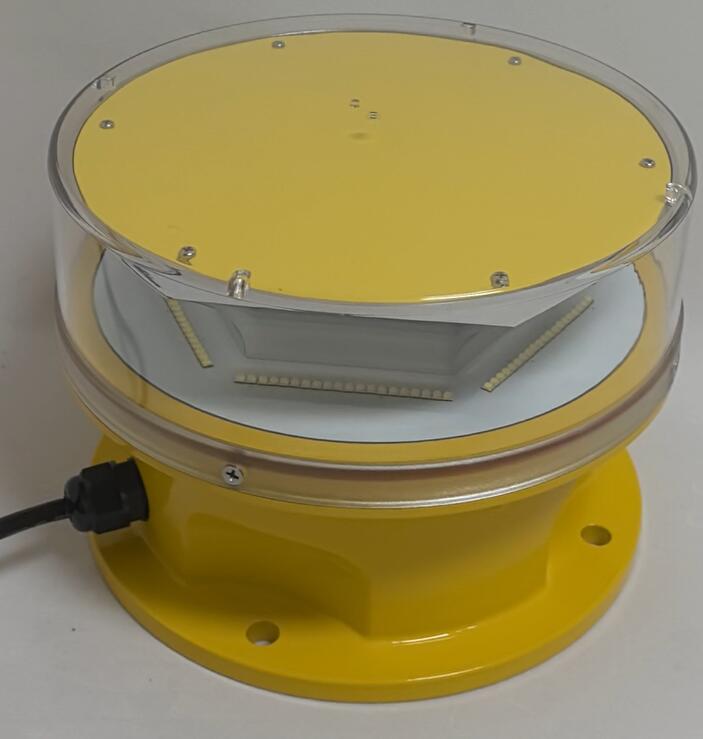Aircraft Warning Lights: The Silent Guardians of Modern Airspace
In an era of increasing air traffic and urban development, aircraft warning lights serve as critical safety components that protect both airborne vehicles and ground structures. These specialized lighting systems create a visible language that pilots instinctively recognize, preventing collisions with tall buildings, wind turbines, communication towers, and other obstacles. As aviation technology advances, aircraft warning lights continue to evolve with smarter, more efficient designs that meet stringent international standards while addressing environmental concerns.
The Science of Visibility: How Aircraft Warning Lights Work
Optical Engineering Principles
Modern aircraft warning lights incorporate:
Precision-calibrated LED arrays for maximum luminosity
Computer-optimized beam patterns (15-30° vertical dispersion)
Chromaticity-tuned colors meeting ICAO specifications
Adaptive brightness controls (100-20,000 candela range)

Operational Parameters
Key performance characteristics include:
Day/night visibility up to 10 nautical miles
Flash rates between 20-60 pulses per minute
360-degree horizontal coverage
Instant full-intensity illumination
Regulatory Framework and Compliance Standards
International Lighting Classifications
Type Color Intensity Application
L-810 Red Low (32cd) Structures <200ft
L-864 Red Medium (2,000cd) Obstacles 200-500ft
L-865 White Medium (20,000cd) Daytime marking
L-856 White High (200,000cd) Critical obstacles
Certification Requirements
Manufacturers must demonstrate:
Photometric performance validation
Environmental durability (-40°C to +70°C)
Vibration resistance (MIL-STD-810G)
Waterproof integrity (IP67 minimum)
Lightning protection (20kA surge rating)
Innovative Applications Across Industries
Urban Infrastructure
Synchronized lighting for skyscraper clusters
Architectural integration solutions
Light pollution reduction technologies
Renewable Energy
Vibration-resistant wind turbine systems
Offshore-compatible marine designs
Radar-enhanced visibility solutions
Aviation Facilities
Airport obstacle lighting networks
Helipad perimeter marking
Temporary construction warnings
Technological Advancements
Smart Lighting Systems
IoT-enabled performance monitoring
Predictive maintenance algorithms
Automated fault reporting via satellite
Sustainable Solutions
Solar-hybrid power configurations
Energy-harvesting designs
Recyclable component architectures
| aircraft warning lights |
Enhanced Safety Features
Aircraft detection activation
Weather-adaptive intensity
Emergency backup systems
Installation and Maintenance Best Practices
Strategic Placement Guidelines
Height-optimized positioning
Obstruction-free sight lines
Terrain-adaptive mounting
Preventative Maintenance
Quarterly photometric verification
Annual structural inspections
5-year component refresh cycles
Future Development Trends
Next-Generation Technologies
LiDAR-assisted detection systems
Holographic obstruction displays
AI-powered traffic prediction
Regulatory Evolution
Drone corridor integration
Space traffic management
Dynamic lighting standards
Aircraft warning lights remain indispensable safety components in our increasingly crowded airspace, blending time-tested reliability with cutting-edge technology. As urban landscapes grow vertically and air traffic patterns become more complex, these systems will incorporate smarter, more responsive technologies while maintaining uncompromising performance standards. The future promises lighting solutions that actively communicate with aircraft systems while minimizing environmental impact - ensuring aircraft warning lights continue their vital role as silent guardians of aviation safety for decades to come. Through continuous innovation and rigorous quality standards, these essential markers will evolve to meet the challenges of tomorrow's three-dimensional transportation networks.
